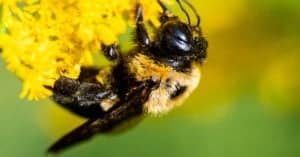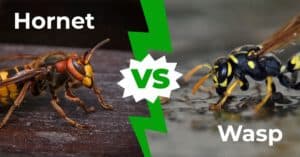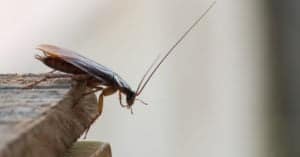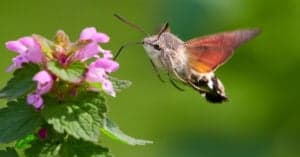Baby Wolf Spider: Facts & Unbelievable Pictures!
The words “spider” and “cute” are not often used in the same sentence, but when it comes to baby wolf spiders, we think we can make an exception. These fantastic arachnids are seriously cute and are born by the hundreds! Did you know that baby wolf spiders travel on their mothers’ backs or that they are called spiderlings?
Keep reading to learn six awesome facts about baby wolf spiders and to see some seriously adorable pictures of them.
#1: Baby Wolf Spider Spiderlings are Born by the Hundreds!

iStock.com/Henrik_L
Mother wolf spiders lay hundreds of eggs and carry them around in a circular egg sack until their babies are ready to hatch. When these babies are born, they hatch in groups of anywhere from 100 to 300. Only about half of these tiny arachnids will grow to adulthood.
Once these babies are born, they gather on their mother’s back. The mother spider will carry her babies around until they are big and strong enough to fend for themselves.
#2: Wolf Spiders are Teeny Tiny Newborns

iStock.com/Henrik_L
When baby wolf spiders are born, they are incredibly tiny. In fact, if you saw one, you might even mistake it for a tiny speck! Baby wolf spiders come from eggs and are carried around in egg sacs by their mothers until they are ready to hatch. Once they hatch, they depend on their mother for survival.
#3: Wolf Spiders Travel on Their Mother’s Backs

reptiles4all/Shutterstock.com
You should never kill a wolf spider if you see one in your home. Even though you might not be able to see them, hundreds of baby spiders ride on their mother’s backs until they are old and strong enough to fend for themselves. This means when you squish a mother spider, you could release hundreds of tiny baby spiders into your home!
#4: Wolf Spiders are Born in the Fall
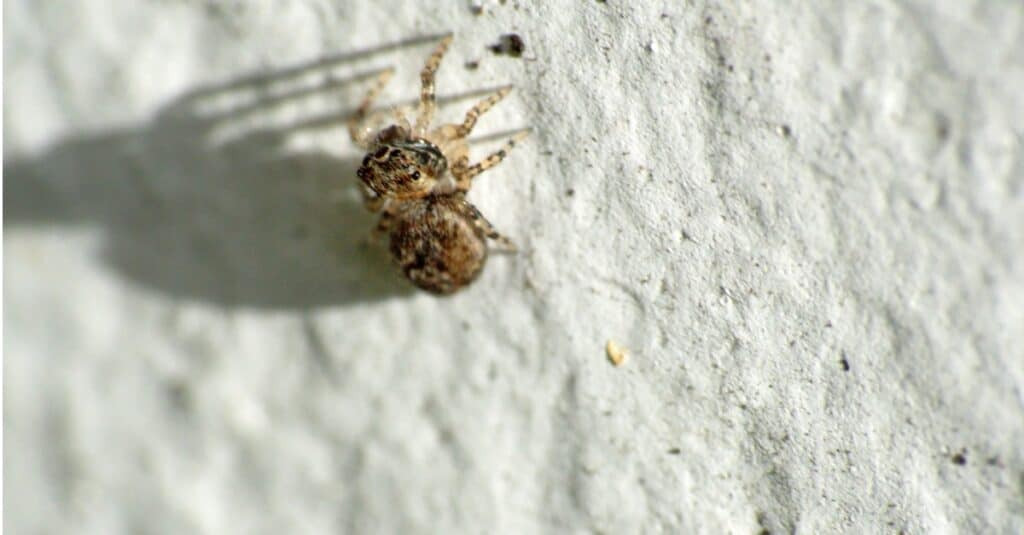
iStock.com/ANPerryman
Baby wolf spiders are most commonly born in the fall. Wolf spider eggs incubate in an egg sac attached to the end of a female wolf spiders’ abdomen. They grow for around twenty to eighty days before they are ready to hatch. The mother spider can sense when her babies are ready and will spin the egg sac around with her legs while using her mouth to perforate an opening where the spiderlings can crawl out.
Baby spiders quickly grow into adults and have an average lifespan of one to two years.
#5: Baby Wolf Spiderlings Can Fly!
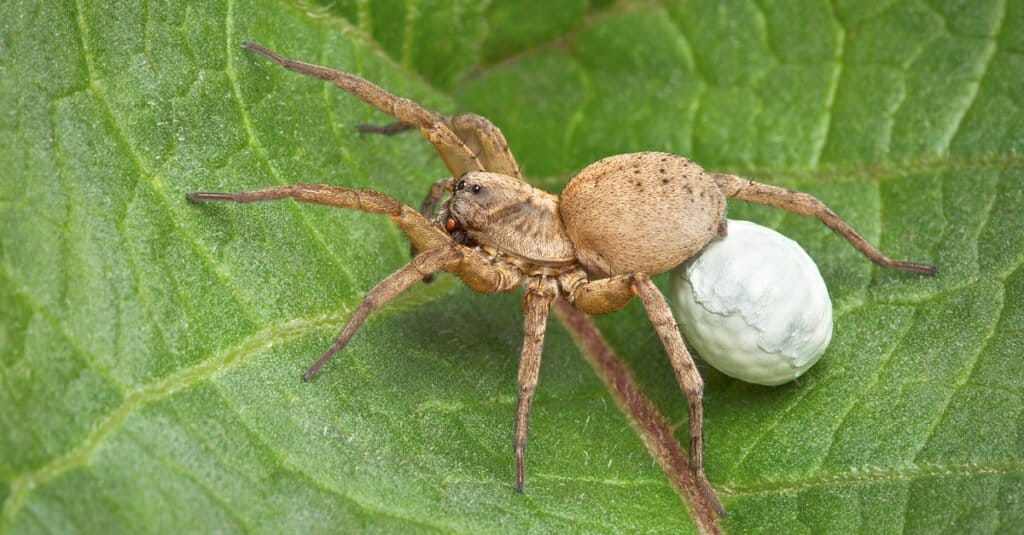
Cathy Keifer/Shutterstock.com
Baby wolf spiders may not be literal flying spiders, but they’re pretty close! If you’ve ever seen Charlotte’s Web, you’re probably familiar with the scene where the baby spiders balloon away from their mother by casting silk into the wind and floating away. Baby wolf spiders can do the same thing! To do this, they raise their abdomen and shoot out a small string of silk.
When done correctly, this string of silk catches in the breeze and carries the babies off. Scientists think they do this to avoid competition with other siblings.
#6: Baby Wolf Spiders’ Bites are Harmless
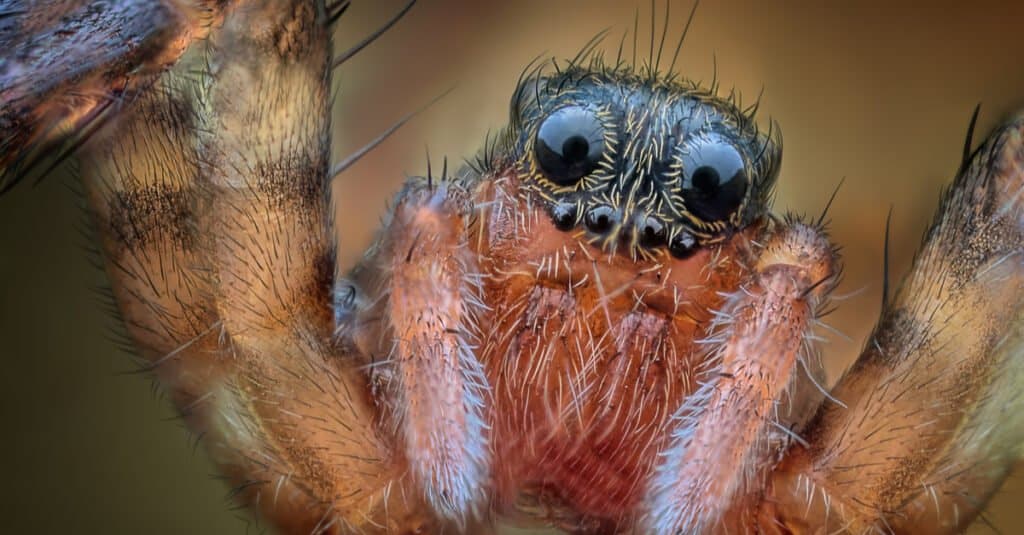
Sebastian Janicki/Shutterstock.com
Scientists used to think the bite of a wolf spider caused necrosis, which is the death of tissue surrounding the bite. Recent research disproved this theory, though, when researchers discovered that brown recluse spiders were being misidentified as wolf spiders.
This discovery proved that wolf spider bites are harmless. They will cause pain and possibly some swelling, but these effects are usually short-lived and are not life-threatening. Baby wolf spiders are known to lurk around windows and in cupboards, but since they are harmless to humans, they’re great to have around, especially for insect control!
FAQs (Frequently Asked Questions)
What are baby wolf spiders called?
Baby wolf spiders are called spiderlings.
What do baby wolf spiders eat?
Baby wolf spiders survive off of small prey like tiny insects. They are also known to eat parts of larger prey that their mothers offer to them.
How big are baby wolf spiders?
Baby wolf spiders are incredibly tiny. So small, in fact, that most people mistake baby wolf spiders for little black specks.
Where do baby wolf spiders live?
Baby wolf spiders live in many different types of habitats. They can be found in places like suburban gardens, coastal forests, and even woodlands. Wolf spider babies live on every continent worldwide except Antarctica.
More from A-Z Animals
The words “spider” and “cute” are not often used in the same sentence, but when it comes to baby wolf spiders, we think we can make an exception. These fantastic arachnids are seriously cute and are born by the hundreds! Did you know that baby wolf spiders travel on their mothers’ backs or that they are called spiderlings?
Keep reading to learn six awesome facts about baby wolf spiders and to see some seriously adorable pictures of them.
#1: Baby Wolf Spider Spiderlings are Born by the Hundreds!

iStock.com/Henrik_L
Mother wolf spiders lay hundreds of eggs and carry them around in a circular egg sack until their babies are ready to hatch. When these babies are born, they hatch in groups of anywhere from 100 to 300. Only about half of these tiny arachnids will grow to adulthood.
Once these babies are born, they gather on their mother’s back. The mother spider will carry her babies around until they are big and strong enough to fend for themselves.
#2: Wolf Spiders are Teeny Tiny Newborns

iStock.com/Henrik_L
When baby wolf spiders are born, they are incredibly tiny. In fact, if you saw one, you might even mistake it for a tiny speck! Baby wolf spiders come from eggs and are carried around in egg sacs by their mothers until they are ready to hatch. Once they hatch, they depend on their mother for survival.
#3: Wolf Spiders Travel on Their Mother’s Backs

reptiles4all/Shutterstock.com
You should never kill a wolf spider if you see one in your home. Even though you might not be able to see them, hundreds of baby spiders ride on their mother’s backs until they are old and strong enough to fend for themselves. This means when you squish a mother spider, you could release hundreds of tiny baby spiders into your home!
#4: Wolf Spiders are Born in the Fall

iStock.com/ANPerryman
Baby wolf spiders are most commonly born in the fall. Wolf spider eggs incubate in an egg sac attached to the end of a female wolf spiders’ abdomen. They grow for around twenty to eighty days before they are ready to hatch. The mother spider can sense when her babies are ready and will spin the egg sac around with her legs while using her mouth to perforate an opening where the spiderlings can crawl out.
Baby spiders quickly grow into adults and have an average lifespan of one to two years.
#5: Baby Wolf Spiderlings Can Fly!

Cathy Keifer/Shutterstock.com
Baby wolf spiders may not be literal flying spiders, but they’re pretty close! If you’ve ever seen Charlotte’s Web, you’re probably familiar with the scene where the baby spiders balloon away from their mother by casting silk into the wind and floating away. Baby wolf spiders can do the same thing! To do this, they raise their abdomen and shoot out a small string of silk.
When done correctly, this string of silk catches in the breeze and carries the babies off. Scientists think they do this to avoid competition with other siblings.
#6: Baby Wolf Spiders’ Bites are Harmless

Sebastian Janicki/Shutterstock.com
Scientists used to think the bite of a wolf spider caused necrosis, which is the death of tissue surrounding the bite. Recent research disproved this theory, though, when researchers discovered that brown recluse spiders were being misidentified as wolf spiders.
This discovery proved that wolf spider bites are harmless. They will cause pain and possibly some swelling, but these effects are usually short-lived and are not life-threatening. Baby wolf spiders are known to lurk around windows and in cupboards, but since they are harmless to humans, they’re great to have around, especially for insect control!

